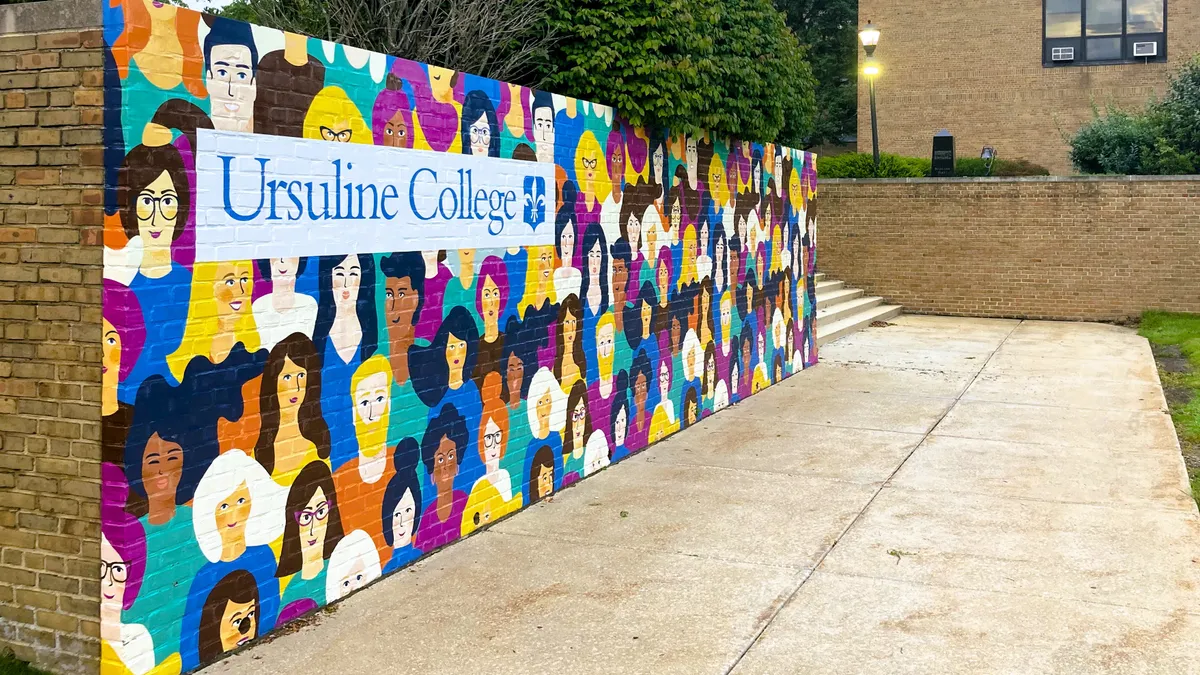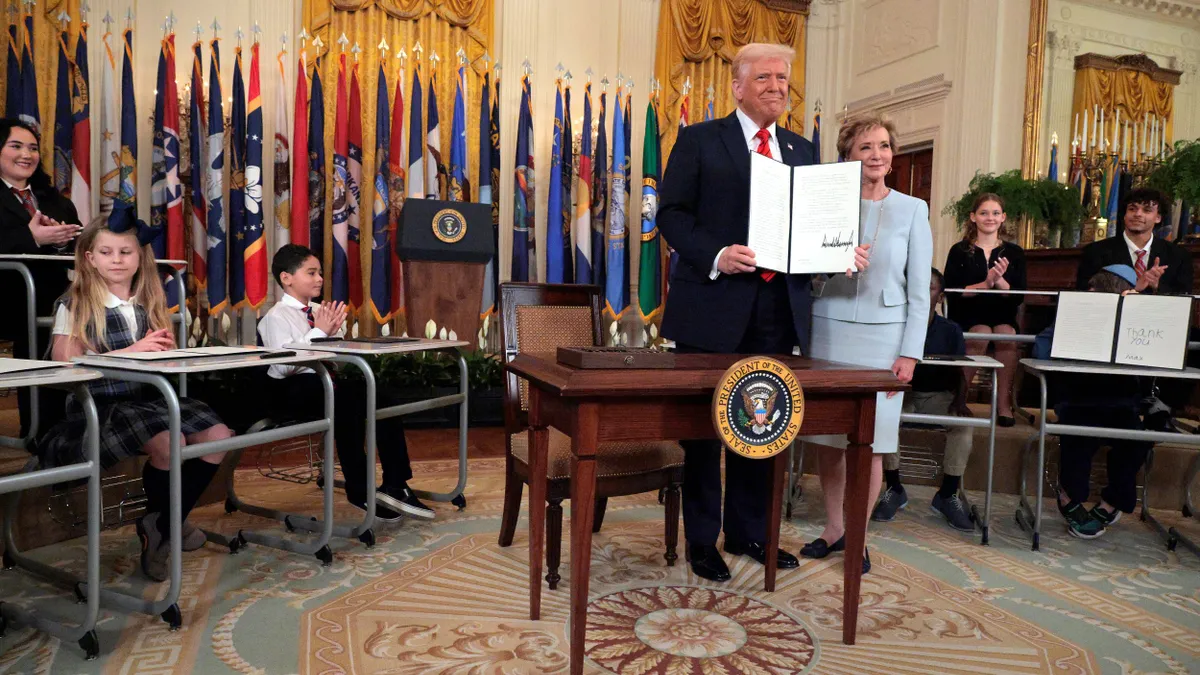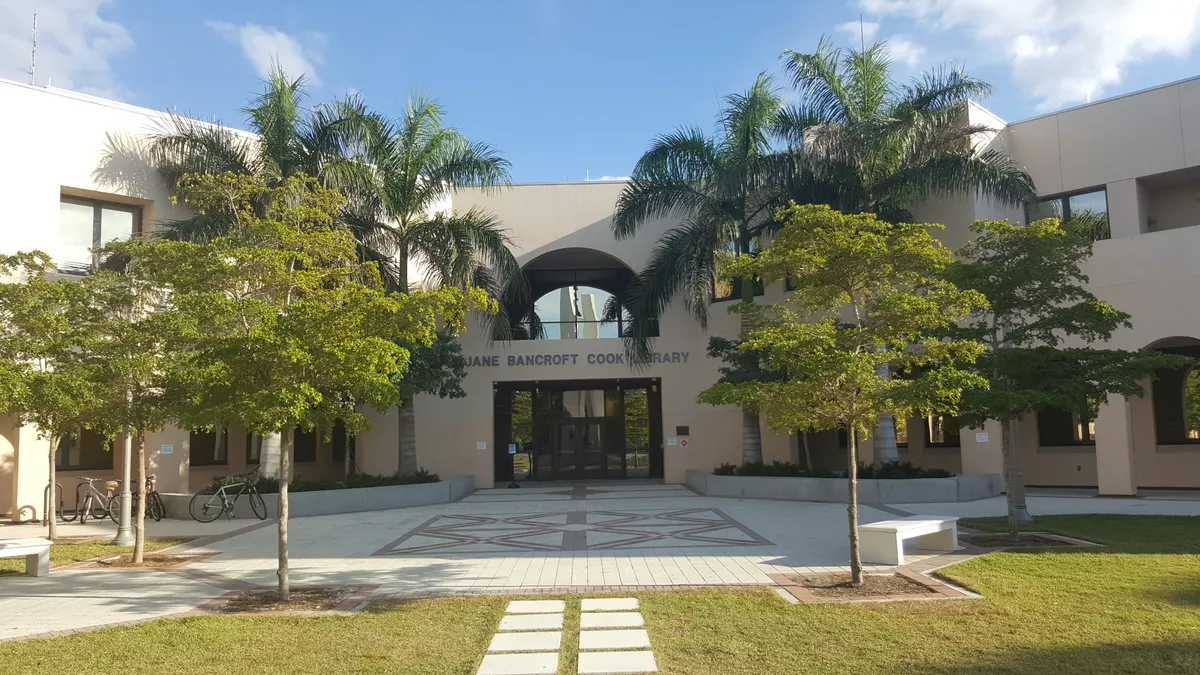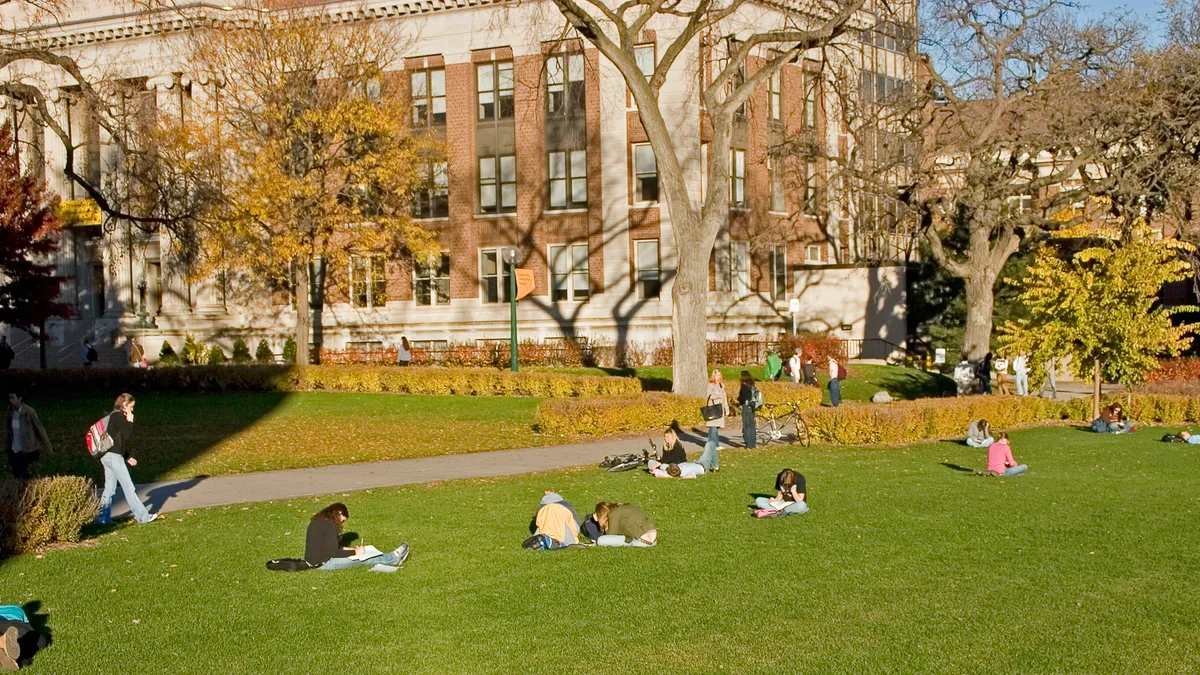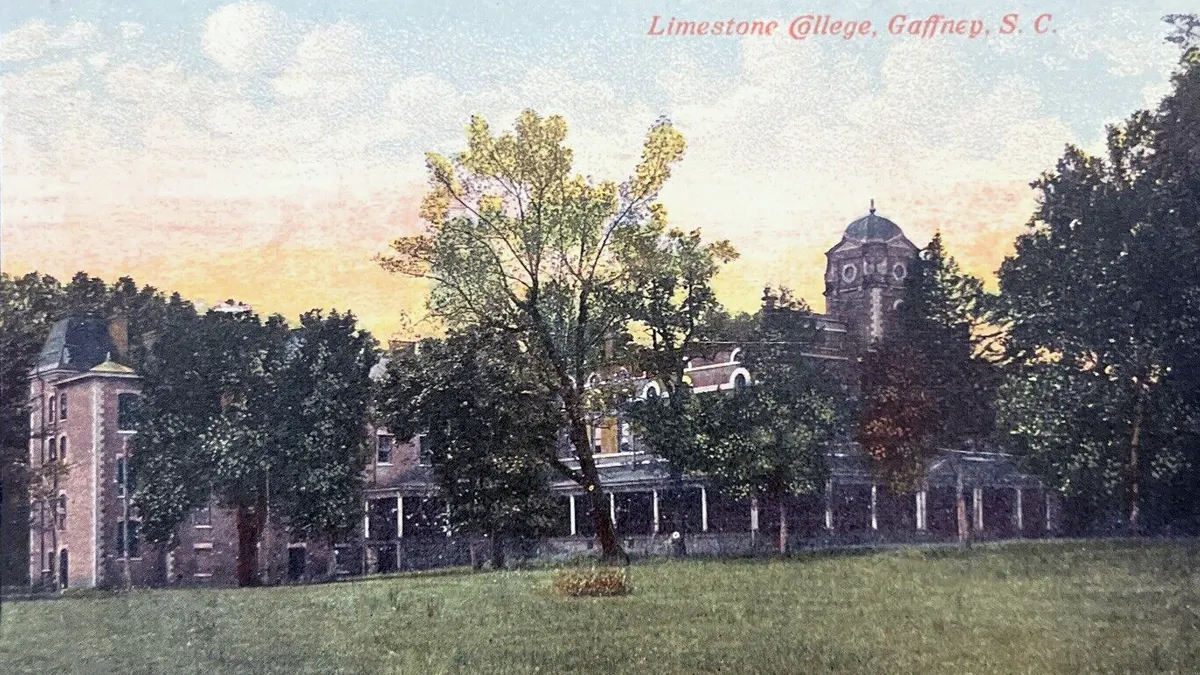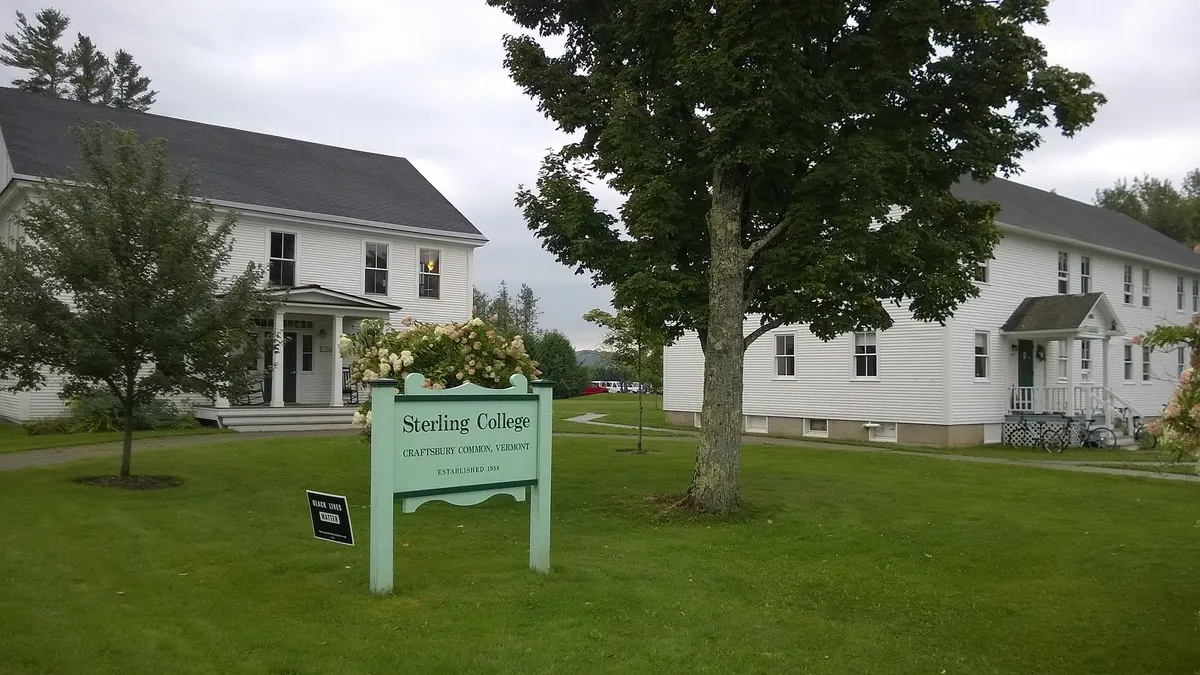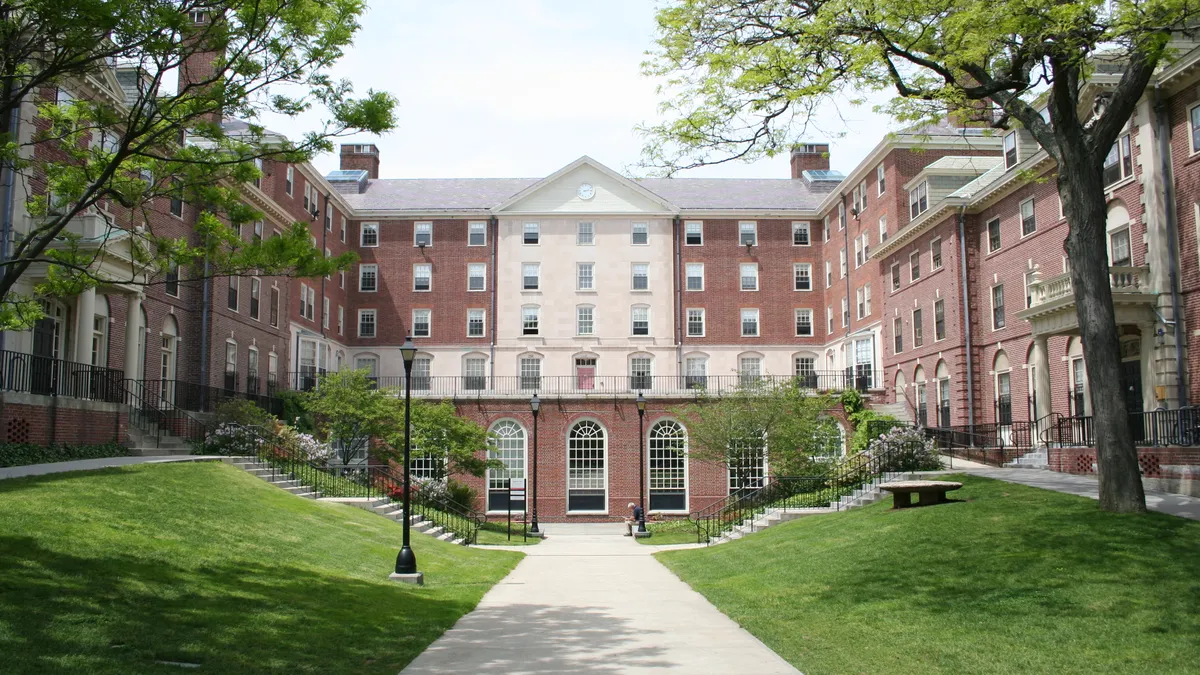Last year, St. Ambrose University announced it would acquire Mount Mercy University, a fellow Iowa-based Catholic institution, in a move leaders have dubbed a “strategic combination.” By next summer, if all goes to plan, Mount Mercy University will be known as Mount Mercy Campus of St. Ambrose, retaining its name, Catholic identity and mission, as well as some of its distinct programs.
Like other small Catholic colleges that have combined over the past few years, the two institutions hope to improve their long-term financial outlook by combining costs and resources while expanding educational opportunities for their students.
“We were very motivated to look for opportunities that will give us some real stability in the long term,” said Todd Olson, president of Mount Mercy. “Putting our resources together and putting the assets of the two campuses together really creates that substantially stronger financial model.”
Like many other private institutions, Catholic colleges are grappling with a shrinking pool of high school graduates even as their operational costs increase, said Kevin Cavanagh, managing director of Higher Ed Consolidation Solutions, a consultancy focused on college mergers.
And these demographic challenges are often heightened for Catholic colleges, as nearby Catholic high schools — once considered a reliable recruitment pipeline — enroll a larger share of non-Catholic students to make up for steep declines in their traditional student populations, said Cavanagh.
Many Catholic K-12 schools have also closed over the last 25 years, he said.
Between 2000 and 2023, the number of Catholic elementary and secondary schools in the U.S. shrank 27.3% to 5,920, according to data from the National Catholic Educational Association compiled by the U.S. Department of Education. And in the 2024-25 school year, 63 Catholic schools closed against 24 openings, according to a NCEA report.
Meanwhile, nearly 80 nonprofit colleges and universities have closed or merged in the past five years — more than half of which were religious affiliated institutions, a recent analysis by The Hechinger Report found.
Mergers may offer a viable path forward for some Catholic colleges, Cavanagh said. Yet it’s an option that is far too often dismissed and viewed as a defeat rather than as a tool, he said.
“It's not the fault of these colleges that trends are changing,” said Cavanagh. “But how they respond to it will really define how successful they are on behalf of their institution.”
Higher ed’s “consolidation era”
Higher education is entering “its consolidation era,” said Gary Stocker, founder of College Viability, a firm that reviews the financial health of colleges.
Mergers are a common business tactic that have been prevalent for years across many sectors, including banks, airlines, hotels, car rental companies and fast food restaurants, Stocker said. Higher ed is just now “dipping the toe into the water,” he said.
In Stocker’s view, there are too many colleges and college seats — and not enough students to pay for those seats, even if institutions are offering 50% to 60% tuition discounts. “Until there are fewer colleges, there will be closures and mergers,” he said.
Several Catholic colleges have closed, merged or formed partnerships in recent years to grapple with their challenges.
Villanova University bought Cabrini University’s campus in 2024 — the year the smaller Catholic institution shuttered — so it could expand its physical footprint in the Philadelphia area.
Rockhurst University, in Kansas City, Missouri, launched a “strategic alliance” with Spring Hill College, in Mobile, Alabama, in March, allowing students at the two Catholic institutions to participate in programs offered by the other.
And Seattle University, a Catholic institution, in June expanded its academic portfolio by absorbing a non-Catholic private school, the Cornish College of the Arts.
Ursuline College, outside Cleveland, Ohio, announced in September that it would merge into Gannon University, another Catholic institution in Erie, Pennsylvania — a move that recently got accreditor approval. If all goes to plan, their combination will be complete in December 2026, and Ursuline will officially be renamed the Ursuline College Campus of Gannon University.
Both Gannon and Ursuline were looking for more long-term financial stability amid demographic challenges, presidents of each institution said.
Gannon’s enrollment rose to 4,548 in fall 2023, up roughly 6% from five years prior, according to federal data. Meanwhile, Ursuline’s student headcount dropped nearly 14% over that period to 923 students. Both institutions are meeting their undergraduate enrollment targets heading into the fall, said Gannon’s president, Walter Iwanenko Jr.
Gannon officials wanted to partner with an institution that had a similar mission and was in good financial standing but differed in programs and location, said Iwanenko.
Meanwhile, Ursuline was facing the added demographic challenge of being a small women’s-focused college and its sponsor, the Ursuline Sisters of Cleveland, was facing diminishing congregation numbers and asking to be replaced, according to its president David King.
Gannon’s program offerings and Catholic identity aligned well with Ursuline’s, King said. The merger also allowed both institutions to become more cost-efficient and offer their programs in two different markets, he said.
“It’s sort of a unicorn,” said Iwanenko. “The partnership is such a great match because of the strengths of both institutions.”
Merge early. But is that enough?
Catholic colleges need to think proactively — long before they start running out of money — about an institution that they could combine with, said Cavanagh.
College leaders should consider starting to explore a merger when their institutions draw money from their endowments to cover operations, or if their enrollment decreases over five to 10 years and the decline affects their ability to educate students, Cavanagh said.
If they reach a point where they can’t make payroll in six months, it’s usually too late, he added.
That was the case for the College of New Rochelle, in New York, when the now-shuttered Catholic institution failed to find a merger partner. Its debt was too profound and it was forced to reach a teach-out agreement with Mercy College — now Mercy University — in 2019, said Cavanagh, who at the time worked as an administrator at the College of New Rochelle and was involved in the discussions.
When Mount Mercy struck a deal to combine with St. Ambrose, the university’s finances were sound short-term, said Olson. But, looking several years down the road, he questioned whether Mount Mercy could survive demographic challenges and increasing costs.
Both institutions lost students between fall 2020 and fall 2024. St. Ambrose’s enrollment declined 16.7% to 2,500 students in fall 2024, and Mount Mercy’s headcounts dropped 17.8% to 1,402 over that period, according to figures from a Mount Mercy spokesperson.
While St. Ambrose had a larger endowment and more financial stability than Mount Mercy, they wanted a more stable and promising financial model going forward, Olson said.
Next summer when the combination finalizes, Olson said, he expects the colleges to consolidate administrative roles and services. He also said he expects enrollment to eventually increase, as the colleges’ courses and graduate programs will be offered to students at both campuses.
Still, in general, merging just two colleges may not be enough to put them on a path toward viability, said Stocker. A larger merger involving as many as five to 15 institutions may be needed, he said.
A single official could represent 10 different institutions at a high school event — offering students a wide range of programs, degrees, majors and activities, said Stocker. And administrative positions — for instance, vice president of marketing, CFO or president — could be scaled across 30,000 students, instead of 1,000, he said.
Colleges could also pool resources — such as for marketing, enrollment, insurance, and construction — across a network of 50 Catholic colleges that operate under a single national organization, Stocker added.
The creation of a national network of Franciscan or Jesuit institutions is possible, and it would be “far more powerful than allowing schools in certain parts of the country to fade away,” Cavanagh said.
Navigating challenges
Forging a merger between Catholic institutions “can be fairly complicated, even if it seems on the surface like a very natural fit,” said Cavanagh.
For example, a religious order may own the land that the college was built upon, with the college owning or leasing the buildings, he said. And as with other mergers, these colleges also have to navigate different finances and debt loads.
And it can be complicated to win approval when the two merging institutions are accredited by two different agencies or are located in different states, Cavanagh said.
Ursuline’s leaders have focused much of their energy throughout the merger process with Gannon on working out how to integrate programs or functions in the information technology and business offices, said King.
One campus may also need to give up their NCAA affiliation, depending on how the merger is structured, said Cavanagh. And institutions need to consider whether their academic portfolios align, complement each other's, or overlap, he said.
But often bringing two distinct campus cultures together — and getting buy-in from the campus community — can be the most challenging part of a merger, said Cavanagh. Strong alumni associations may oppose mergers. And boards made up of alumni or religious members of the sponsoring orders can have an understandably “emotional and personal connection with the institution,” he said.
“It’s a little bit harder to pull the trigger on a business decision when you’ve got personal connectivity to an institution, and I think that runs deep with a lot of Catholic institutions,” Cavanagh said.
In the Ursuline-Gannon merger, retaining the Ursuline name was crucial for the combination to work, said King.
The first questions people raised when the partnership was announced, King said,were, “What will happen to our name? What will happen to our identity?”
At Gannon, some staff are concerned about their job security and asking questions that leaders don’t have answers to yet, said Iwanenko.
Concerns about what the merger would bring created “a quicker and a deeper reservoir of anxiety” that’s pervasive on campus, King said. That means communication is needed to help quell anxiety as the entire campus navigates the merger process, said King.
The two presidents at Ursuline and Gannon, said King, frequently discuss who should be keeping colleagues informed on their respective campuses and how they’re delivering those messages.
They focus on how they can give the campus community “as meaningful an understanding as possible in the moment of where we are, and where we’re going, and how that affects them,” King said.
Despite the fears and unknowns, once the new structure is in place, students at Ursuline will be able to continue their academic programs, residential life on campus and athletic programs, said King. But Ursuline students will also have access to new opportunities by enrolling in programs from Gannon, he said.
“We will offer more to our students and do so more efficiently,” King said.

